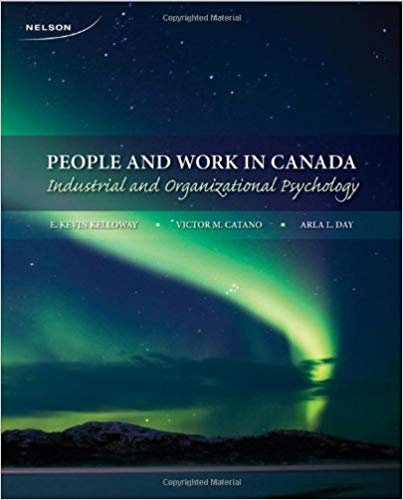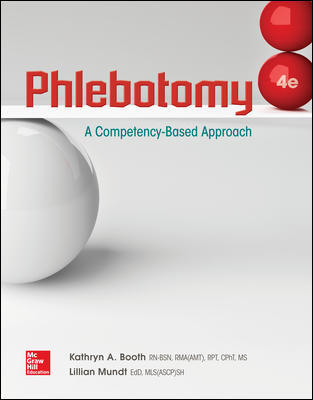People And Work in Canada Industrial And Organizational Psychology 1st Edition – Test Bank
CHAPTER 3: JOB ANALYSIS AND COMPETENCY MODELS
In this chapter, we discuss job analysis and competency models in terms of their relevance to human resources development. We review several job analysis techniques and discuss the importance of job analysis in terms of its legal implications and implications for accurate job decisions.
Learning Outcomes
After reading this chapter you should be able to
- Understand the importance of job analysis and the role it plays in human resource
functions
- Recognize processes for identifying job descriptions and job specifications used in human
resources
- Recognize some of the common job analysis methods
- Appreciate the relation of job analysis to legal requirements
- Understand the factors to consider in choosing among different job analysis procedures
- Understand what competencies are
- Distinguish competency-based human resources models from those based on job analysis
Chapter Summary
In most employment situations, there are many applicants for each available job. The employer’s goal is to hire an applicant who possesses the knowledge, skills, abilities, or other attributes (KSAOs) required to successfully perform the job being filled. A properly conducted job analysis helps the employer identify the KSAOs that are related to successful job performance. The job analysis also helps to identify both the duties that will be performed as part of the job and the level of performance required for job success. Hiring someone through an assessment of job-related attributes is based on an assumption that higher levels of attributes are linked to higher levels of job performance.
Some of the more popular methods used in conducting job analyses are interviews, direct observation, rating task statements and KSAOs, and structured job analysis questionnaires and inventories.
Competencies are measurable attributes that distinguish outstanding performers from others in a defined job context. Competencies have also been defined as groups of related behaviors, which are needed for successful job performance in an organization. Similarly, they have been defined as the behaviors that superior performers in an organization exhibit more consistently than others do, although in practice competencies have at times been based on “average” performance.
Competency-based management systems take the view that employees must be capable of moving among jobs and carrying out the associated tasks for different positions (Reitsma, 1993). In the competency-based approach, organizations attempt to identify those KSAOs that distinguish superior performers from others, and that will allow an organization to achieve its strategic goals. By selecting people who possess KSAOs that lead to superior performance, organizations are attempting to establish a closer connection between organizational success and individual performance.
I/O psychologists are concerned with identifying and measuring the KSAOs that underlie the factors that the organization considers to be components of successful job performance.
Copyright © 2011 Nelson Education Ltd. 17
Discussion Topics & Learning Activities
1.
Think about a job you currently hold or that you have held in the past. Put yourself in the role of “subject matter expert” and think about the requirements of the job.
18
Copyright © 2011 Nelson Education Ltd.
a. b.
c.
What were the job tasks? What were the employee requirements?
How difficult is it to remember the details of the job tasks and requirements? Do you think your view is “biased”? Would your supervisor have different ideas about what the job entailed?
What do these different opinions tell us about conducting job analyses?
Chapter 3—Job Analysis and Competency Models MULTIPLE CHOICE
- Which of the following is referred to as a job analysis process in which subject matter experts identify examples of effective and ineffective work behaviours which are then sorted into performance dimensions?
- functional job analysis
- critical incident technique
- Fleishman job analysis survey
- position analysis questionnaire
ANS: B PTS: 1 BLM: Remember REF: 75
- Which of the following is a computer-administered job analysis questionnaire that defines KSAOs required for effective performance, and generates employment specifications based on
the highest ranking survey items?
- functional job analysis
- critical incident technique
- Fleishman job analysis survey
- work profiling system
ANS: D PTS: 1 BLM: Remember REF: 72
4. Which of the following is a disadvantage of the PAQ?
- the required reading comprehension is high
- it provides only qualitative data
- it has limited application to different jobs
- it doesn’t have any normative sample with which to compare results
ANS: A PTS: 1 BLM: Remember REF: 72
Copyright © 2011 Nelson Education Ltd.
19
- What do we call an individual who has detailed knowledge about a specific job and how it is currently performed?
- worker-oriented analyst
- O*NET expert
- subject matter expert
- educator/trainer
ANS: C PTS: 1 BLM: Remember REF: 66
- How are task inventories BEST defined?
- Methods that identify employee requirements through an analysis of the overall
workplace.
- Work-oriented surveys that define jobs in terms of their component activities or tasks.
- Worker-based analyses that identify the KSAOs, independent of the actual job.
- Job analysis techniques that focus on general worker requirements (e.g., sensory, cognitive, and physical activities.)
ANS: A PTS: 1 BLM: Remember REF: 73
- Methods that identify employee requirements through an analysis of the overall














Reviews
There are no reviews yet.